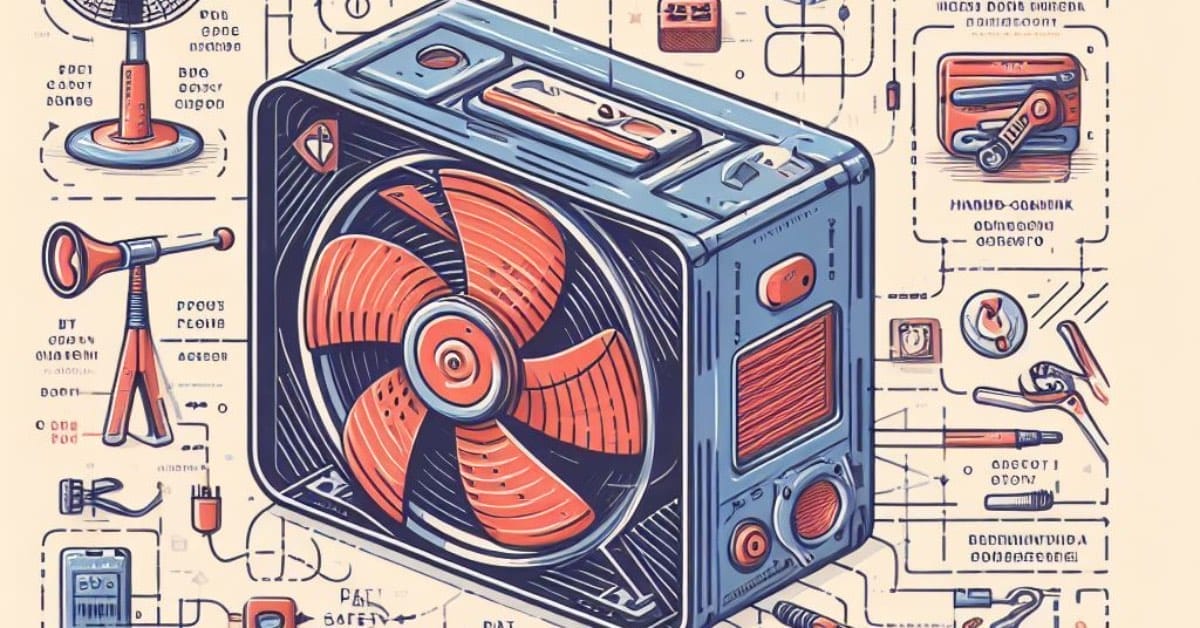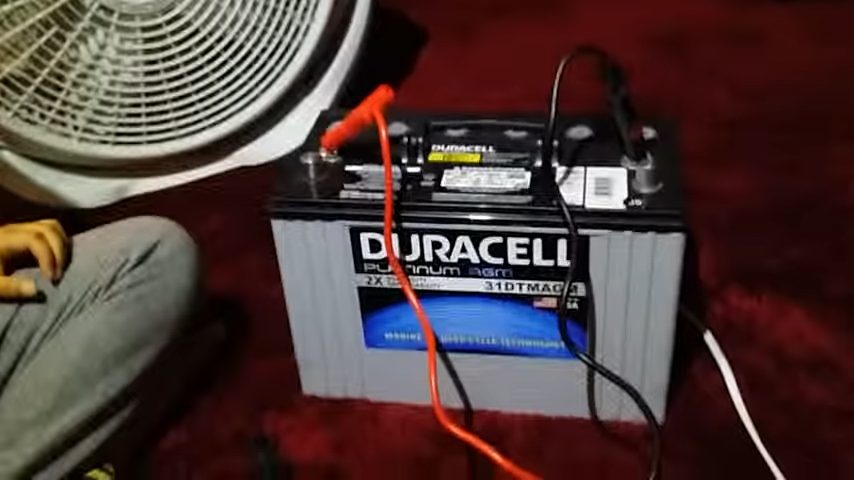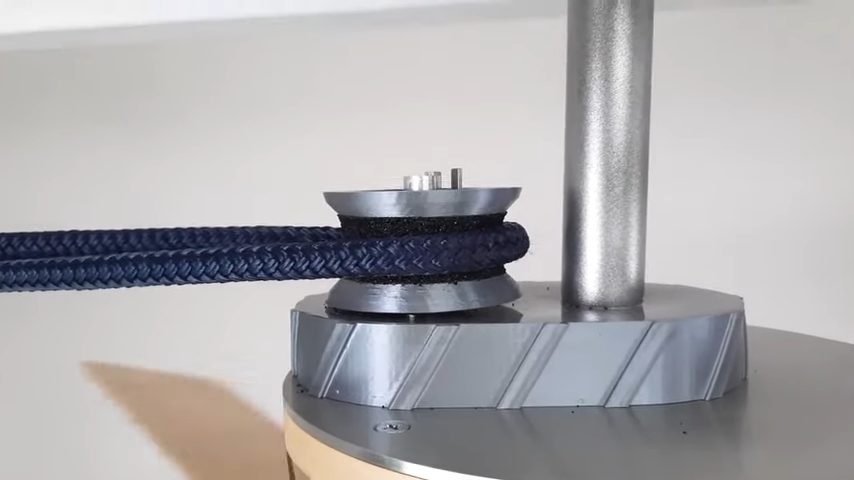How to Run a Box Fan without Electricity? (6 Great Ways)

In this article, I’ll give you many options to run a box fan without electricity.
A box fan can be a lifesaver for those in hot climates. But what do you do when the power goes out and you lack electricity? I will go through how you can do this and share some tips!
In a nutshell, here are the most popular viable ways to run a box fan without electricity:
- Use solar energy
- Use gas (such as gasoline, propane, or kerosene)
- Employ a battery
- Use heat
- Use water
- Use gravity
Running a Box Fan on Solar Power
Alright, team, here’s the game plan to harness the sun’s mighty power for our cool breeze machine – that’s right, a box fan!
- Gear Up: First, let’s round up our MVPs – a kickin’ solar panel, some trusty wiring, and our star player, the box fan! Ensure the solar panel is beefy enough to handle the fan’s appetite for power. 💪🔌
- Sunny Side Up: Find that perfect sunny spot where the sun is playing its greatest hits all day long. Position your solar panel to catch those golden rays like a pro! 🌞🏞️
- Wiring It Up: Let’s get those wires hooked up to the solar panel terminals.
- Positive to positive, negative to negative – it’s like setting up speakers. ⚡
- Control Freak Time: We’re not letting that power run wild! Introduce a charge controller to the mix to keep our battery in check and our fan spinning without a hiccup. 👍🔋
- Battery Buddy: If you want to keep that breeze going even when the sun clocks out, let’s hook up a battery. Think of it as a power bank for our fan – it’s there when you need it. Ensure it’s got enough juice to last the night. 🌙🔋
- Fan Connection: Now, the moment we’ve been waiting for – connect that fan! If it’s not ready we might need an inverter to translate that energy language. 🔄💃
And now for my final touch to make sure this setup is not just good but great:
- The Right Solar Panel: Choose a solar panel with the chops to power our fan. We’re talking proper voltage.
- Battery Backup Boogie: Grab a battery that can go all night.
- Wiring: Use wires that can handle the electricity without breaking a sweat.
- Maintenance Mambo: Keep that solar panel clean and check those connections regularly.
Recap if you added a charge controller:
- Connect the solar panel to the charge controller.
- Connect the charge controller to the battery.
- Connect the battery to the box fan.

Running a Box Fan on Gas
The Items You Will Need
Gather the following:
- Get gasoline, diesel, kerosene, propane, or natural gas
- An engine, motor, alternator, and electric box fan
- A motor with electronic components (a generator) that functions when heat is applied to a gas-powered fan
Step 1: Connect the Fan to the Motor or Generator
Attach the two cables from the motor or generator to the fan’s terminals, as shown below.

Step 2: Configure the Motor or Generator
Now, turn the generator switch knob to the on position and light it up.

Running a Box Fan on a Battery
You don’t require many specialized tools for this option; you only need the following: Batteries, cables, a snap connection, a soldering iron, and electrical tape.
Step 1: Get a Battery
Which battery to use depends on the box fan’s power requirements.
Usually, you will need an AA battery or a 9-volt battery to operate a tiny box fan, whereas a 12-volt car battery may be required to power a larger one.
Step 2: Wiring
Strip the end of each wire linked to the snap connection and the box fan. Twist the red (positive) wires and join them.

Step 3: Heating
Optionally, heat the joints and adhere them together using a soldering iron. Do the same to the black (negative) wires.
Step 4: Conceal the Wire and Solder
Wrap electrical tape over the soldered locations so no wire or solder is visible.
Step 5: Attach the Snap Connector
Finally, connect the snap connector to the 9-volt battery. You now have a battery-operated box fan that will operate until the battery’s charge is depleted.
Running a Box Fan with Heat
You’ll need the following supplies:
- A stove or a similar heat source
- A fan (or motor blades)
- CPU cooling fans
- Chopping blades (scissors, box cutter, etc.)
- Pliers
- Superglue
- Peltier steel wire (thermoelectric device)
Step 1: Arrange the Materials
Arrange the materials in the following sequence:
Peltier > a large CPU heatsink > a small CPU heatsink > a fan motor
Step 2: Connect the Wires
The red and black wires should be connected as they are the same color. Follow these sub-steps:
- Attach the Peltier module to the heat source to ensure proper and secure connections.
- Connect the Peltier module’s output terminals to the voltage regulator or voltage boost converter to stabilize the generated electricity.
- Connect the regulated voltage output to the box fan.
You convert heat from the stove into electricity to run the fan as it becomes hotter.
Using Water to Run a Box Fan
Water can also be used to power a box fan.
You will require water, a turbine, and a box fan. Water is converted into kinetic or mechanical energy via a turbine, essentially an impeller blade.
Running water turns the blades by passing through them and flowing past them. Rotational energy is the term for this movement. The fan, connected to the water tank or another energy storage device, is placed underneath or next to this device. The rotating turbine will power the fan. You may use salt water instead of ordinary water.
Steps
Follow these steps to use water to run a box fan:
- As a basis, use a block of flat wood (about 12 inches is good for a small fan).
- Glue a little vertical rectangle in the middle of the wooden base.
- Affix the base with glue to two ceramic cups (one on each side of the base).
- Attach the box fan’s motor with glue to the top of the base’s rectangular piece of wood.
- Attach two copper wires with solder to the fan’s back (the opposite side where you will attach the blades).
- Remove the wires’ frayed ends to reveal the copper wire beneath.
- Wrap the exposed wire’s two ends in aluminum foil.
- Put the ends of the aluminum foil into the two cups. Each ceramic cup should have two tablespoons of salt added to it. Add light, thin plastic, or metal blades to the box fan’s motor. Then, fill the water in each ceramic cup in the corridor.
The box fan’s blades should begin to spin as you fill the cups, generating airflow. In essence, the salt water is transformed into a saltwater “battery” that stores and releases energy to run the fan.

Using Gravity to Run a Box Fan
If you have something heavy, some chains (or ropes), and some gears, you can use them to make a box fan spin using gravity – a gravity box fan.
Utilizing gravity, one of nature’s most easily accessible forces, you can create your energy source using this technique. I’ll show you how.
Step 1: Connect the Chains
Let the chain pass via a few interlocking gears. Attach some weights by a hook on one end of the chain.

Step 2: Mode of Action
Consider this a system of pulleys that uses gravity to create mechanical energy.
The gears are turned by the weights pulling the chain. The rotating gears then drive the fan.
FAQs
Can you power a box fan without electricity?
Absolutely! With the right setup, you can power a box fan using alternative energy sources like solar power, gas, batteries, heat, water, or gravity.
What are the most efficient methods to run a box fan without power?
Solar power is one of the most efficient methods due to its renewable nature and minimal environmental impact. Battery power is also efficient, especially if you use rechargeable batteries.
How practical is it to use gas to power a box fan?
Using gas can be practical in situations where you have a reliable supply and the necessary equipment to convert the gas into electrical energy safely.
Is it safe to run a box fan on a battery?
Yes, it’s safe to properly connect the wires and ensure that the battery’s voltage matches the fan’s requirements. Always follow safety guidelines when handling batteries.
Can heat power a box fan?
Yes, using thermoelectric devices like Peltier modules, you can convert heat into electricity to power a fan. It requires a good heat source and the correct setup.
How effective is water in running a box fan?
Water can be very effective when used with a turbine to create mechanical energy, converted into electrical energy to run a fan. It’s a clean energy source and can be quite sustainable.
Is a gravity-powered box fan feasible for everyday use?
A gravity-powered box fan is more of a novelty and may not be practical for everyday use. It requires constant resetting of the weights and may not provide consistent airflow.
How can I ensure my safety when using these alternative methods?
Always follow the instructions carefully, use protective gear when necessary, and ensure all electrical connections are secure and insulated. If using gas, ensure the area is well-ventilated to prevent fume buildup.
References
Video References:
LDSreliance
Desertsun02
Ludic Science
Sussex Fire Department
R0V3R83
Connor Mulligan
